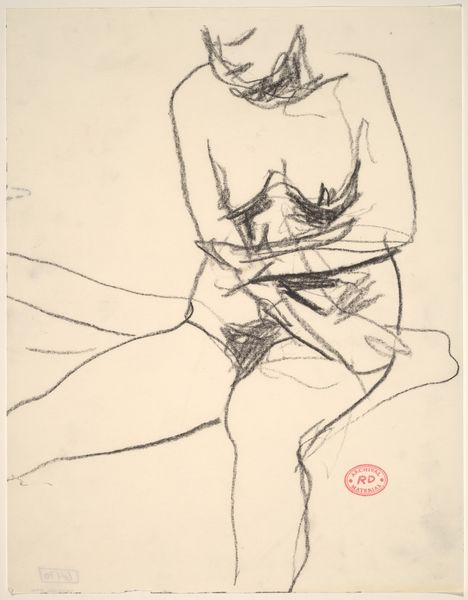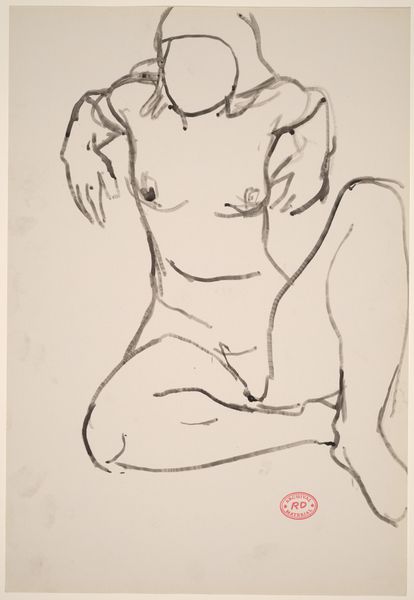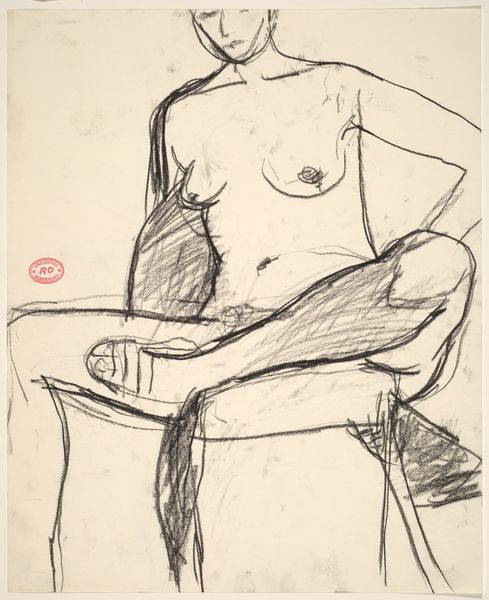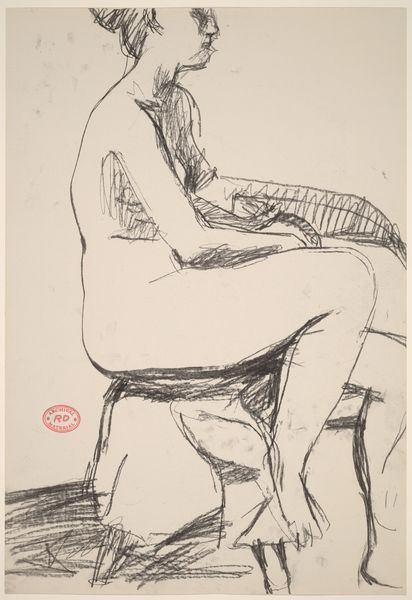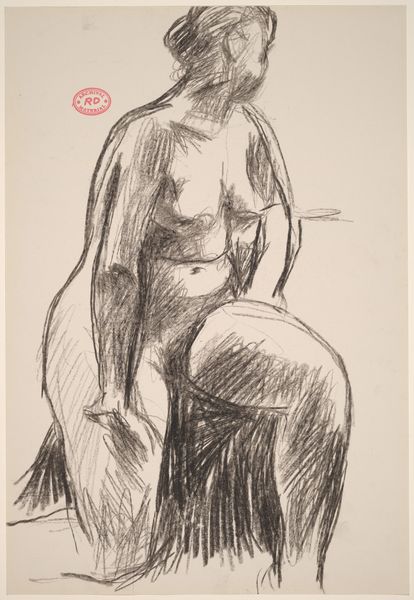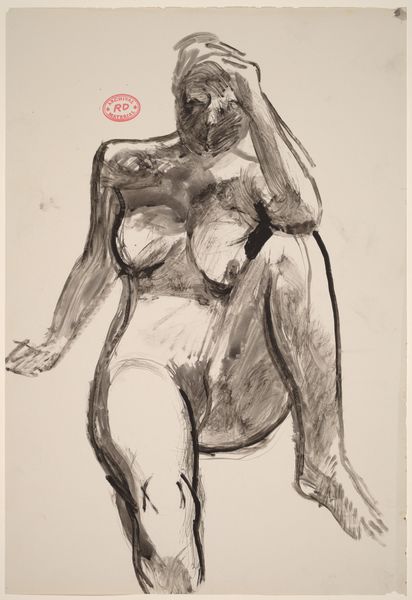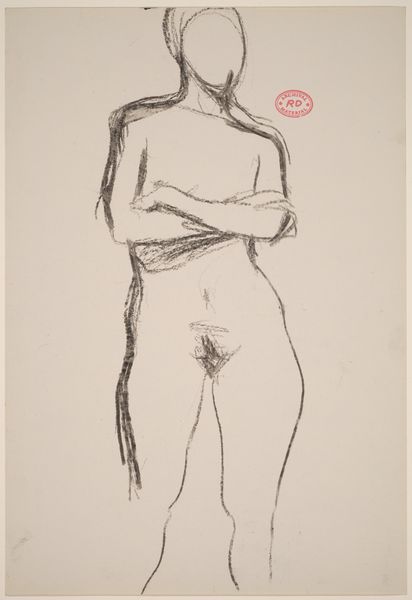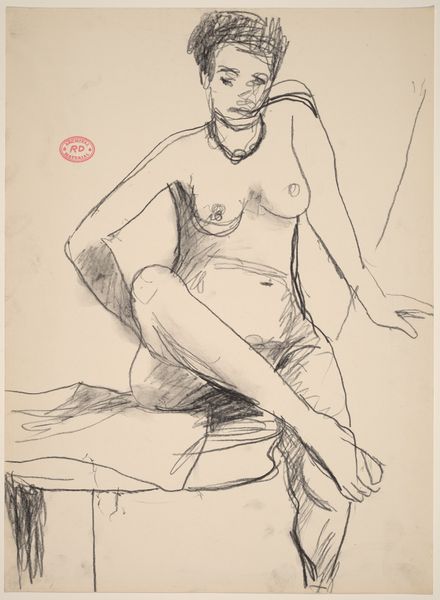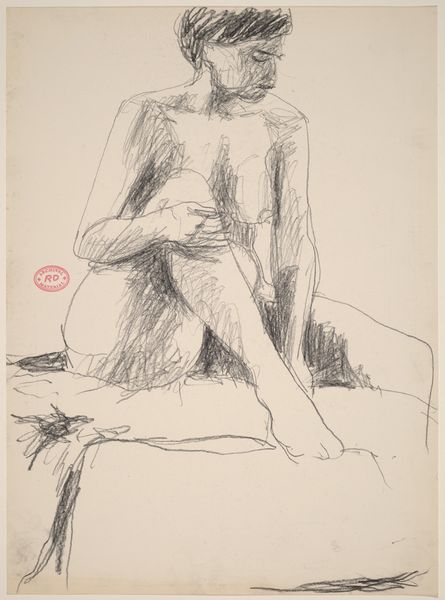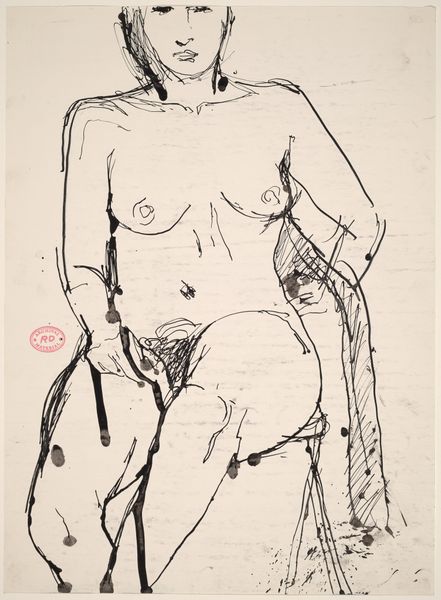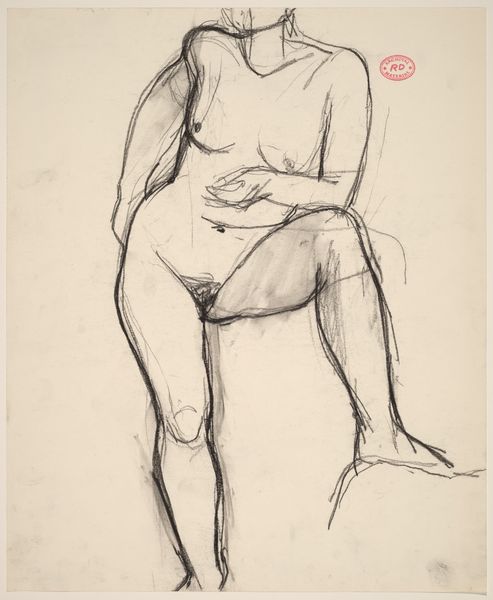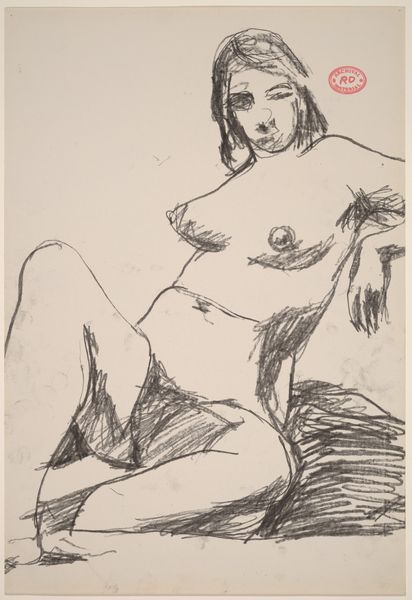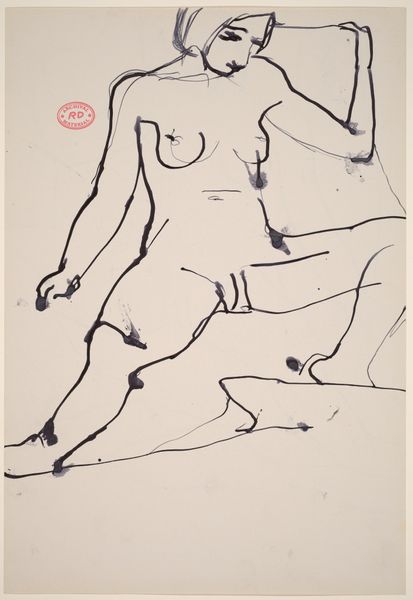![Untitled [seated female nude with arm over draped chair back] by Richard Diebenkorn](/_next/image?url=https%3A%2F%2Fd2w8kbdekdi1gv.cloudfront.net%2FeyJidWNrZXQiOiAiYXJ0ZXJhLWltYWdlcy1idWNrZXQiLCAia2V5IjogImFydHdvcmtzLzc0Y2RhMTYxLWFlMzEtNGU2NC05ZDc1LTQ0OGViYjdkODU0ZS83NGNkYTE2MS1hZTMxLTRlNjQtOWQ3NS00NDhlYmI3ZDg1NGVfZnVsbC5qcGciLCAiZWRpdHMiOiB7InJlc2l6ZSI6IHsid2lkdGgiOiAxOTIwLCAiaGVpZ2h0IjogMTkyMCwgImZpdCI6ICJpbnNpZGUifX19&w=3840&q=75)
Untitled [seated female nude with arm over draped chair back] 1955 - 1967
0:00
0:00
drawing, pencil
#
drawing
#
ink drawing
#
pen sketch
#
pencil sketch
#
figuration
#
bay-area-figurative-movement
#
pencil
#
nude
Dimensions: overall: 40.6 x 27.9 cm (16 x 11 in.)
Copyright: National Gallery of Art: CC0 1.0
Editor: This is Richard Diebenkorn's "Untitled [seated female nude with arm over draped chair back]," made between 1955 and 1967, using pencil and ink. The figure seems very vulnerable, almost collapsing into the chair. How do you interpret this work, considering Diebenkorn's broader artistic practice? Curator: This piece invites us to consider the complex relationship between artist, model, and viewer, particularly within the male gaze. While seemingly a straightforward nude, we must ask: How does Diebenkorn, as a male artist, represent the female form, and what does this say about the power dynamics at play? Editor: Power dynamics? That's not something I immediately considered. Curator: Yes, look at the lines. They're tentative, but also possessive. Are we seeing a depiction of the female nude that subverts traditional objectification, or does it reinforce it through its voyeuristic quality? What does it mean that the drawing remained untitled, unfinished? Is Diebenkorn resisting, or complicit in, the established norms of representing women? Editor: It's interesting to think about the work not just as an image of a nude woman but as a document of a specific kind of relationship. Does the time period matter? Curator: Absolutely. The 1950s and 60s were periods of significant social upheaval, and Diebenkorn's work, even in its apparent simplicity, participates in these debates about gender, identity, and representation. Understanding that history reframes the image as a quiet statement within a culture of both repression and nascent liberation. Editor: Wow, I hadn’t considered all of that. It makes me think about the responsibility artists have, consciously or unconsciously, in perpetuating or challenging social norms. Curator: Precisely. And how our interpretation is always informed by the ever-evolving lens of contemporary theory. Editor: Thank you. I'll definitely look at Diebenkorn's work with fresh eyes now.
Comments
No comments
Be the first to comment and join the conversation on the ultimate creative platform.
